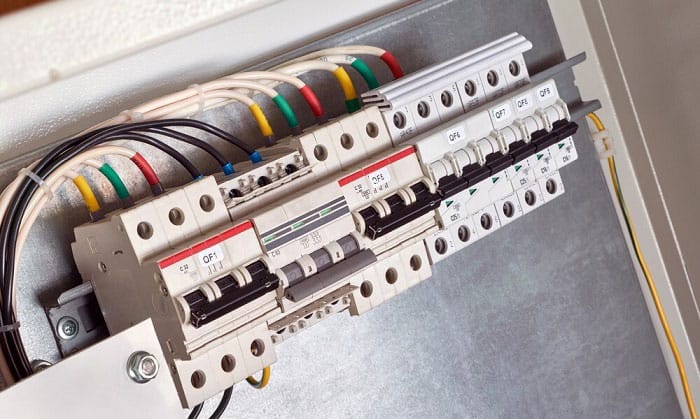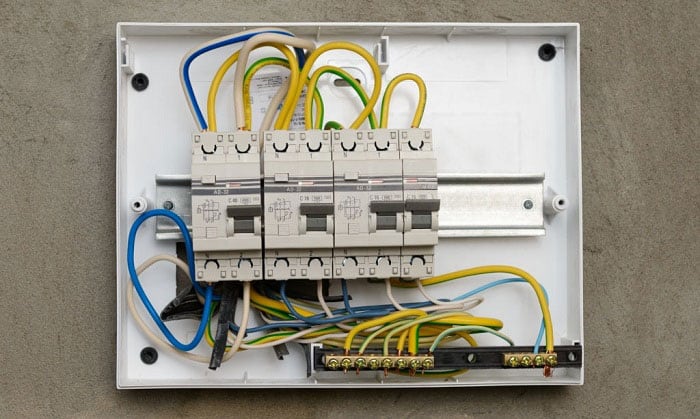Having the proper breaker size for your electric wires is a must-have, especially if you want to live in a home free of any electrical-related accidents. As an expert in all things electrical, I share your concern about finding the appropriate size breaker for your wires.
Perhaps, you may have found yourself asking this one specific question: what size breaker do I need for 8 gauge wire? If this is the question you have in your mind, then you’re in luck! We’ll offer some tips on sizing breakers, so you’ll know why the proper 8 gauge wire breaker size is 50 amps.
In addition, read on to learn more about 8 gauge wire amps and the amperage capacity of other wire diameters.
Table of Contents
How Wires are Sized
Before we determine the proper breaker sizing for your 8 gauge wire, let’s first establish how wires are sized. Knowing how wires are sized is highly beneficial for homeowners like you!
So, the way wires are categorized — according to the American Wire Gauge (AWG) system — is based on the physical radius size of the cable strand. This means that the wire size corresponds to the total circumference of the cable itself.
Now, in terms of wire designation, the size of the cables are numerically assigned conversely: with 40 gauge regarded as the thinnest and 4/0 gauge regarded as the thickest cable.
It’s important to note that the diameter of cable wires corresponds to its capacity to carry electrical amperes. The thicker the wire, the more conducive the cable is to a higher ampere.
To illustrate better, I’ve collated a table of wire amperage capacities for easier viewing. Note that the figures below are for copper wires at a temperature of 60 degrees Celsius.
| 15 amps | 14-gauge wire |
| 20 amps | 12-gauge wire |
| 30 amps | 10-gauge wire |
| 40 amps | 8-gauge wire |
| 55 amps | 6-gauge wire |
| 70 amps | 4-gauge wire |
| 85 amps | 3-gauge wire |
| 95 amps | 2-gauge wire |
Sizing a Circuit Breaker
Circuit breakers might be single-handedly the most important instrument of any electrical circuitry. Why so? It’s because breakers regulate the flow of electricity to a circuit. To have a faulty, or in this case, a wrongly sized breaker, could spell disaster for a property.
Now, how do we properly size a breaker without a breaker size chart? According to electrical experts, a circuit breaker must be sized to at least 125% of its maximum operational capacity. There must be a 25% margin for the amperage capability of circuit breakers in order to assure the safety of your electrical circuits.
For example, if your circuit breaker is rated at 30 amperes, then it will incessantly trip once the circuit reaches 30 amperes, regardless of if it’s a continuous or non-continuous load. From this example, I hope that you’d understand the need for a 25% margin for your circuit breakers.
To further explain, you must first determine the total current running in a circuit. You can do this by adding all the current draw of appliances in the circuit. After that, divide the number you’ve calculated by either 120 v or 240 v, depending on the voltage of your devices.
After that, multiply the figure you’ve derived above by 125%. The result of this formula answers what size breaker you’d need for a specific circuit (the size must be bigger than this result).
Another method you can also use is multiplying 125% (which is the recommended maximum capacity of a breaker) with the circuit current amperage.
Nonetheless, using both of the methods above gives you the answer you need in properly sizing your breaker.
Since 8 gauge wires can capably carry 40 amperes, we can determine that the proper size breaker is at 50 A.
Conclusion
Determining the appropriate breaker size for your wires is vital as it keeps your home safe against electrical mishaps. Plus, you’ll avoid costly repairs and trips to the hospital.
I could only hope that this article helped you answer “what size breaker do I need for 8 gauge wire.” Thank you for reading!
Related:

I am Edwin Jones, in charge of designing content for Galvinpower. I aspire to use my experiences in marketing to create reliable and necessary information to help our readers. It has been fun to work with Andrew and apply his incredible knowledge to our content.



